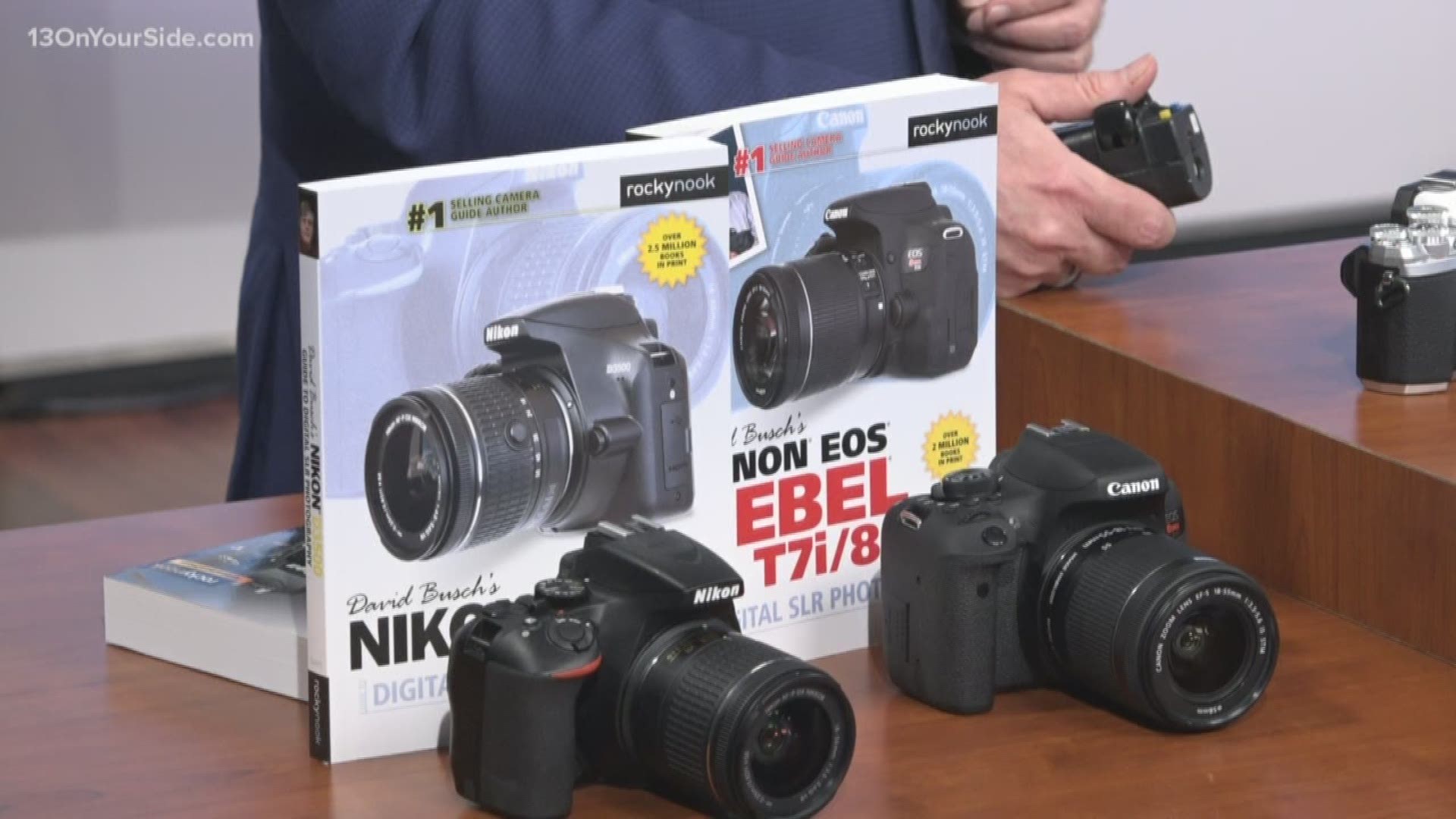MUSKEGON, Mich. — It's not uncommon to get cool, new tech for Christmas -- especially cameras.
But if you've got a camera still sitting in a box at home because you're unsure of how to embark on your photography journey, pull it out!
West Michigan photographer Justin Stubleski joined My West Michigan Thursday to share six helpful tips on how to get creative with your new camera.
1. Read your Camera Manual (or Not)
We all get excited when we have a new tech toy that we have a bad habit of jumping right into using our new device without first reading the manual.
Let's be honest, manuals are dry, boring to read, speak in broad terminology that may be difficult to understand and typically are written by someone who's first language isn't English. And as of late, most cameras don't come with them, just a simple quick start guide! If you want the full manual you have to download it from the manufacturer's website. Ain't nobody got time for that!
How do you get passed that? Simply throw it out the window. Instead, purchase a comprehensive camera guide. Comprehensive camera guides are like the Bible for your camera. They're written by professional photographers, who've been where you've been, work in the industry and know the "Ins and Outs" of photography to help guide you to unlocking the untapped potential of your new camera.
Need a great follow-up to a good camera guide? Try camera classes or a One on One Camera Coaching.
2. When in doubt, use the Auto/Scene modes
The creative manual modes, such as the Program, Aperture priority, Shutter priority & Manual modes can be confusing and difficult to use. Remember K.I.S.S. "Keep is stupid simple" and utilize the Auto & Scene modes. This takes your mind off of the camera functions and allows you to focus your efforts on your composition, the visually compelling elements of the image you are creating.
3. Learn the Basics of Composition
You can create beautiful compelling images simply by shooting in Auto utilizing the basics of composition.
We’re always looking for patterns — be they shapes in the clouds, symmetry in buildings, or colors that compliment each other. There’s just something about patterns that our brains love. Before you get started, you'll want to first ensure that you hold your camera level with the horizon. Nobody like a crooked, wonky horizon line.
- Rule of Thirds: The rule of thirds requires you to break an image into three equal parts either vertically, horizontally or both. The goal is to place key compositional elements into those thirds.
- Leading Lines: The use of natural geography or other features that the viewer will naturally look at first and which will lead their eyes to the main subject or through the image.
- Shooting in Layers: Because photographs are two-dimensional, you tend to lose sense of scale. Consider the visual elements in the foreground, midground, and background that are visually compelling to the viewer when shooting in layers.
- Frame within a Frame: This compositional technique isn’t about hanging a picture in a frame; it’s about using what’s around you to “frame” the subject you are trying to capture, drawing your viewer's eyes into the scene. Some good examples of "Frames within a Frame" include tree branches, trees, as well as doors and windows.
- Focal Points: One way to be sure that people look at the part of the image you want them to look at is to have only that part of the image sharp and in focus and the rest blurry.
- Color: Color is really important in any form of art, particularly how different colors work well together. Generally, colors opposite each other on the color wheel will complement each other. These colors don’t need to be evenly balanced. Some images work best with a small percentage of one color and a greater percentage of another. ex. Blue vs Yellow & Red vs. Green.
- Tell a Story: This one has always been my favorite and most emphasized points of creating images. "A picture is worth a thousand words." Figure out how to tell that story with your images. Create shots that draw your viewers into your stories. Use emotion, find and freeze moments, and incorporate the human element so your photographs resonate and connect with your viewers.
4. Look for the Light
Photography means painting or drawing with light. Your camera and lenses are designed to capture light. Therefore light is the key component to good photography. Different times of day produce different types of light.
Morning and evening produce warm colors and soft light. Midday produces harsh bright light. Indoor lights have different color casts. be mindful of the light.
Be mindful of the direction of your light. If you shoot into the sun your subject with be shrouded in shadows. Keep your back to your light source (sun or window) and your subject in front of the camera facing the light source to ensure proper illumination.
5. Pick-up a Prime Lens
A prime lens is a lens with a fixed focal length, which means it can't zoom in or out. You end up being the zoom. Prime lenses teach you to work within constraints, forcing you to move around, think critically about your composition, positioning, etc. before tripping your shutter and creating your image.
Primes lenses typically let in a lot of light. You can use them in darker trickier lighting situations; and allow you to achieve a shallow depth of field, allowing for a blurred background that helps your subject really standout from the background.
6. Keep it Going, Take your Camera with You, Challenge Yourself, Stay Inspired
The hardest thing about doing anything creative is staying motivated and sticking with it. I can speak from personal experience on this. We've all heard that good old saying, "Practice makes perfect." Well, I can tell you that you will never get good at something if you don't practice. You won't become a good photographer if you periodically shoot. You have to pick up your camera and take it with you.Challenge yourself to create an image everyday, once a week, or create a new photo series once a month.
Don't be afraid to fail. Rome wasn't built overnight. I can promise you that you will run into failures and frustration. Failure begets success. I can promise you that each and every failure gets you closer to your goal. Finally, stay inspired. Being creative can be taxing, but look to other photographers for inspiration. Search the type of photos you wish to create and try emulating what you see. This is one of the best ways to learn when you start shooting.
If you do all these things, I can guarantee that you'll be creating beautiful captivating images in no time and you'll be on a successful path of becoming a better photographer.
Information courtesy of Justin Stubleski.
RELATED VIDEO:
MORE on 13 ON YOUR SIDE:
►Make it easy to keep up to date with more stories like this. Download the 13 ON YOUR SIDE app now.
Love My West Michigan? Check us out on Facebook and Instagram. Subscribe to our YouTube channel.




